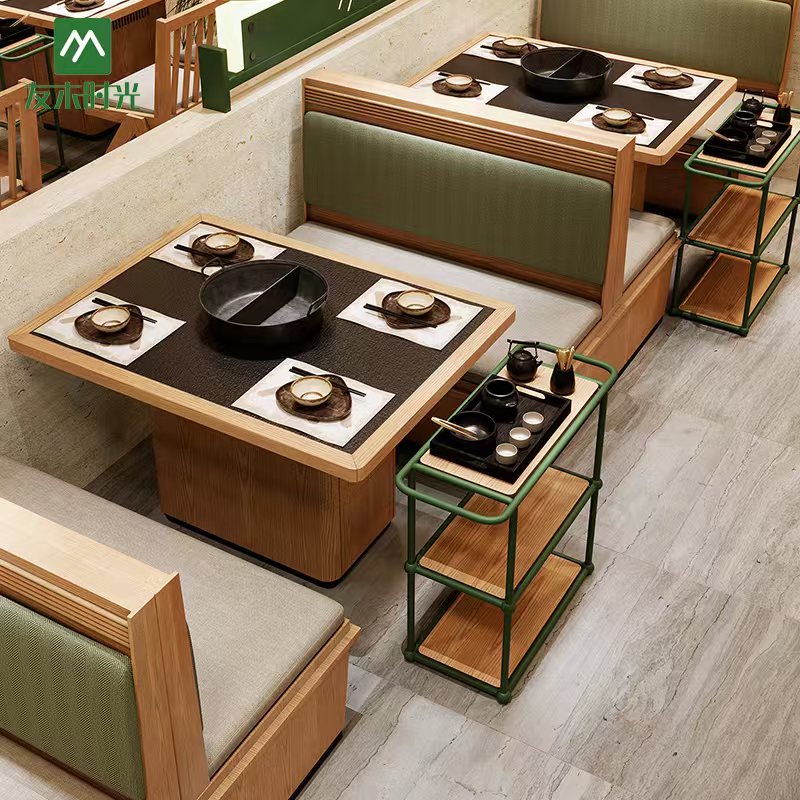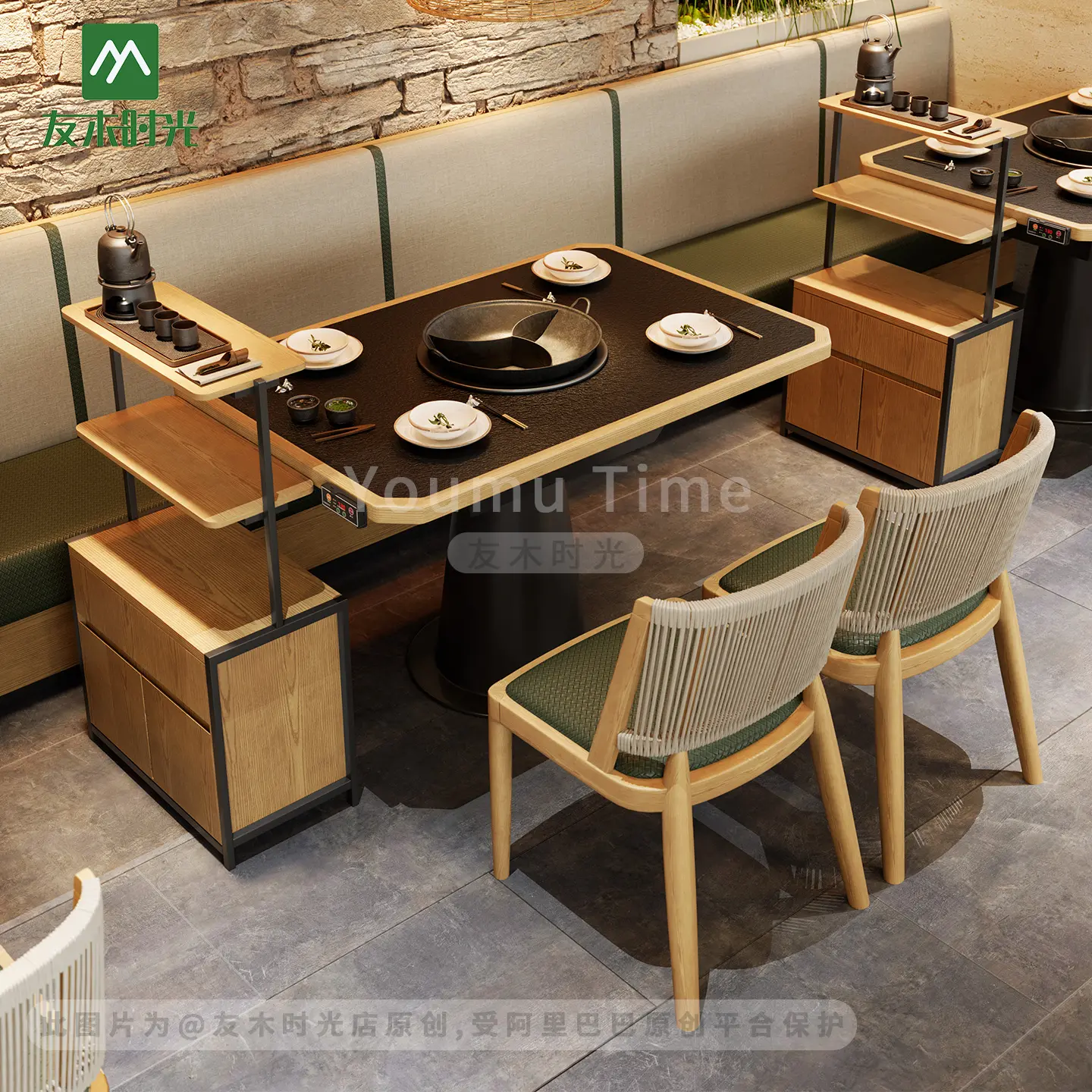Selecting the appropriate materials for a hotel round table set influences its longevity under constant, daily use, the amount of upkeep needed, and the branding message it sends. Here, Youmu Shiguang, a leading commercial hotel manufacturer, provides a specification centered guide that compares the most common types of tabletop and support materials, details pros and cons for commercial use, and provides a checklist with criteria you can refer when writing an RFP or QA checklist.
Why The Selection of Materials Can Be More Valued
A table in a hotel setting is subject to wear (dishes, cutlery), heat (hot dishes), spills, and constant movement. The wrong top will need replacing in no time. The hotel round table set with the right material will not only reduce loss of use time, and replacement costs, but also limit complaints from guests. Think of materials in terms of three for-profit metrics:
- Duration (abrasion, impact, heat)
- Maintainability (ability to clean, re-stain, parts)
- Total cost of ownership (TCO) for the expected life of the product (5–10 years is typical life for commercial furniture).
Top Tabletop Materials For Hotel Round Table Set
HPL (High Pressure Laminate) Tabletop
Best for: high-turnover breakfast rooms, casual hotel dining, banquet backstages.
Pros: excellent scratch and stain resistance, low cost, easy cleaning.
Cons: edge delamination if edges are poorly sealed; limited heat resistance compared to stone.
Spec guidance: laminate face 0.7–1.0 mm on 10–12 mm substrate; ABS or R-type edge banding; adhesion peel test ≤ 2 mm after thermal cycle.
Acceptance tests: scratch resistance, chemical resistance (common detergents), edge peel test.

Engineered Wood / Veneer Over Plywood Tabletop
Best for: mid-range hotel restaurants where wood look matters.
Pros: realistic wood aesthetic, can be refinished, better dimensional stability than solid wood.
Cons: vulnerable at edges and to long-term moisture if not sealed.
Spec guidance: multi-ply core ≥ 18 mm; veneer 0.6–1.5 mm; 3–5 coat PU/UV finish; water absorption ≤ 12% (as measured by standard test).
Acceptance tests: water resistance, adhesion, and scratch tests
Solid Hardwood (Oak, Teak, Walnut) Tabletop
Best for: premium hotel restaurants, signature dining where tactile quality is a selling point.
Pros: long service life when maintained; can be sanded and re-coated.
Cons: higher cost, susceptible to expansion/contraction with humidity.
Spec guidance: thickness ≥ 25 mm or engineered solid with solid edges; moisture content 6–10%; multi-layer lacquer/UV finish.
Acceptance tests: moisture content check, warp/flatness tolerance(critical for stability), finish adhesion
Quartz & Solid Surface (Engineered Stone) Tabletop
Best for: high-end bars, plated service areas, and places needing top stain/heat resistance.
Pros: excellent stain and heat resistance, near-zero porosity when sealed.
Cons: heavy, needs reinforced support; high cost.
Spec guidance: panel thickness 12–20 mm; underlying steel or plywood reinforcement; thermal shock test pass.
Acceptance tests: thermal shock, stain resistance, static load.

Glass (Tempered/Laminated) Tabletop
Best for: contemporary design accents or protected tabletops (overlay over solid support).
Pros: clean, modern look; easy to disinfect.
Cons: brittle for heavy commercial contexts; must be engineered and supported properly.
Spec guidance: tempered glass ≥ 10–12 mm; laminated for safety.
Acceptance tests: impact resistance, edge finish integrity.

Slate (Natural or Sintered Slate) Tabletop
Best for: boutique hotel dining rooms, lobby cafés, and contemporary restaurants seeking a refined stone look with better practicality than marble.
Pros: elegant matte texture, high scratch resistance, low porosity after sealing, and more stable than natural marble; resists heat and stains effectively.
Cons: heavier than HPL or veneer, prone to edge chipping if mishandled; cost varies by quarry and finish type.
Spec guidance: thickness ≥ 12–15 mm for natural slate, or 6–12 mm for sintered variants bonded to a lightweight core (aluminum honeycomb or MDF). Surface sealed with nano-ceramic or polyurethane coating; water absorption ≤ 0.5%; Mohs hardness ≥ 5.5.
Acceptance tests: impact resistance (ball drop test), surface hardness, water absorption, and colorfastness under UV exposure.
Table Legs, Frames and Support Structure
A durable tabletop needs an equally robust support system to form a excellent hotel round table set. Common choices:
- Powder-coated steel (indoor): pipe wall thickness ≥ 1.2 mm; powder coat 60–80 µm; anti-corrosion pre-treatment.
- Stainless steel 304 (humid/coastal): welded joints pass salt-spray test; full passivation.
- Anodized aluminum (outdoor/weight-conscious): structural grade, minimum anodize film thickness specified.
Spec checks: static load (per seat) and lateral stability, fastening torque specs, and concealed reinforcement plates for screw joints. Require BIFMA/EN static and fatigue tests in RFP.
Surface Finishes & Protective Layers
Finish layers dramatically influence long-term appearance and cleanability of a hotel round table set:
- PU/UV cured lacquers for wood: multi-coat build (3–5 coats), low VOC.
- Powder coat for metal: thickness and adhesion tests.
- Sealers for natural stone: absorption reduction to specified ppm.
Specify finish thickness, adhesion test method, and acceptable delta-E (color change) thresholds after accelerated aging.
Commercial Testing & Acceptance Criteria
Insist on third-party test reports on the hotel round table set and include pass/fail thresholds in purchase contracts, when purchase hotel round table sets:
- Abrasion: Martindale ≥ 30,000 rubs (moderate) or ≥ 40,000 (heavy commercial) for upholstery; HPL scratch resistance standard for tops.
- Load & durability: EN 15373 (commercial seating), BIFMA X5 series.
- Enviro & corrosion: ASTM B117 salt spray for coastal locations; Xenon/UV chamber for outdoor composites.
- Fire & safety: regional fire standards (EN/CFR/IMO as appropriate).
Require scanned test certificates from accredited labs with each bid.
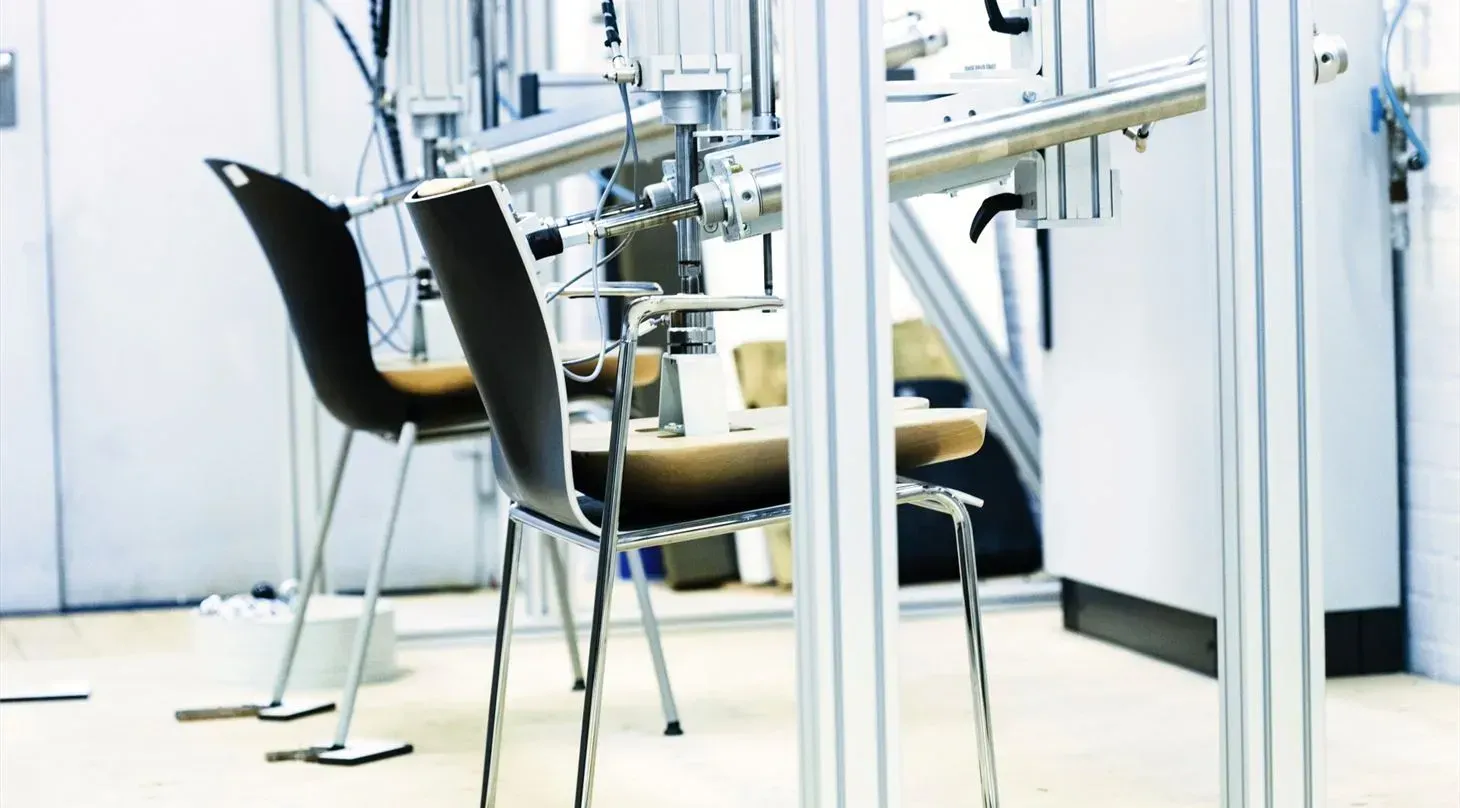
Maintenance, TCO and RFP-ready Fields
Translate material choices into procurement specs. For each item in your RFP include: category, model, material spec, finish spec, exact dimensions, weight, test certificates referenced, replaceable parts list (SKUs), spare-part lead times, warranty terms, and packaging details. This prevents ambiguous promises and streamlines acceptance.
Estimate TCO not just by purchase price but by annual maintenance (cleaning, recoat) and expected replacement interval. For example, HPL may have lower upfront cost and lower maintenance, while solid wood has higher upfront and occasional re-finishing cost but longer ultimate service life if well-maintained.
결론
There is no single “best” material for every hotel round table set. The right choice depends on use case: high-turnover breakfast rooms favor HPL or engineered surfaces; premium dining calls for solid wood or stone; outdoor terraces require PE rattan over aluminum or stainless supports.
Specify measurable criteria — thicknesses, finish builds, abrasion and load test thresholds, salt-spray/UV performance — and demand documentation in the RFP. That turns aesthetic decisions into enforceable procurement outcomes and keeps tables in service longer, reducing downtime and lifecycle cost.
Youmu Shiguang, Your Trusted Hotel Furniture Supplier
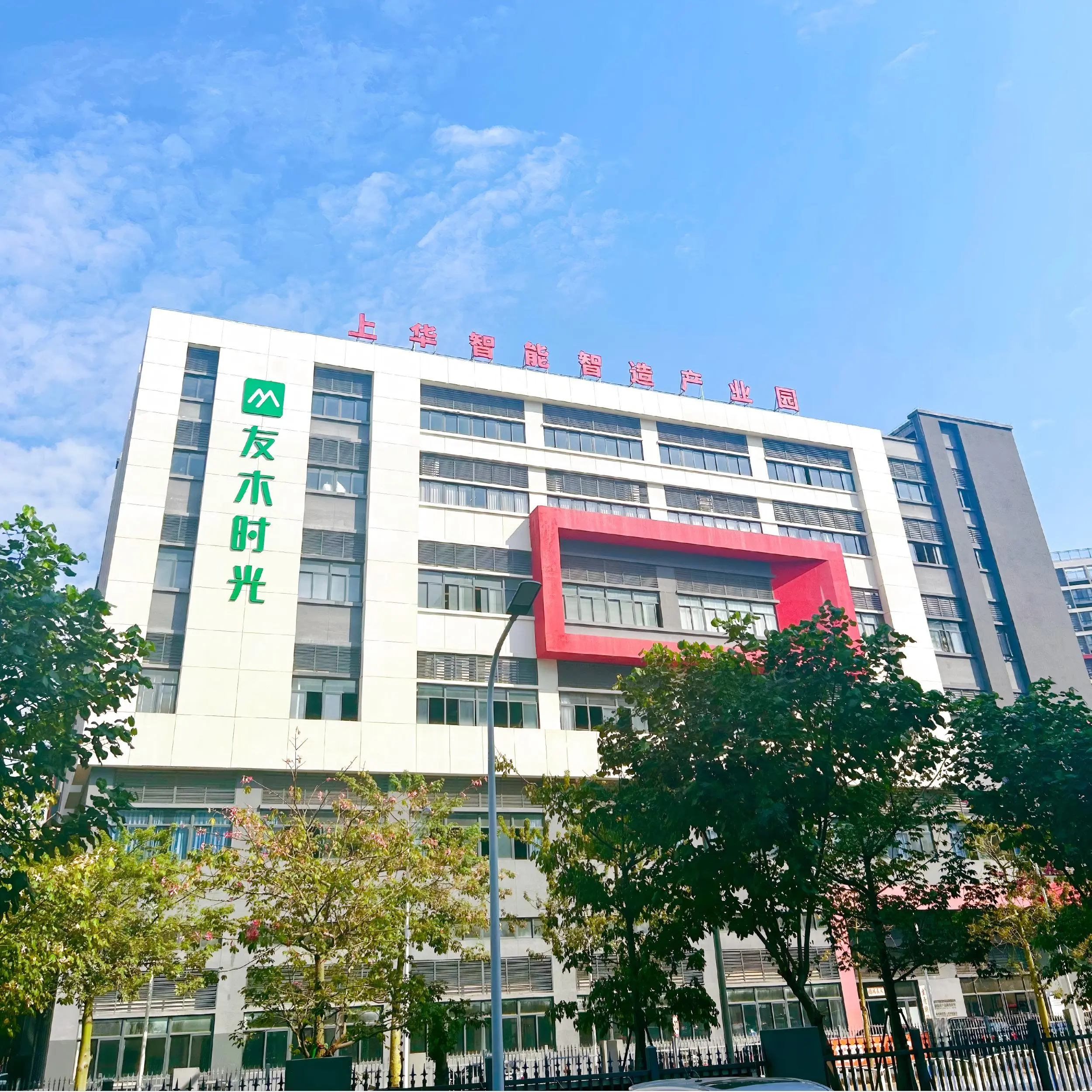
유무 시광 는 leading commercial hotel furniture manufacturer that can offer custom commercial furniture solutions. We offer wholesale hotel round table sets and related customization furniture projects.
Our production strictly follows internationally recognized SOP standards, ensuring consistency, durability, and refined craftsmanship across every piece. With scalable capacity and flexible customization, Youmu Shiguang delivers reliable furniture solutions for hotels, restaurants, and commercial spaces worldwide.
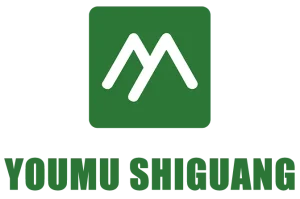
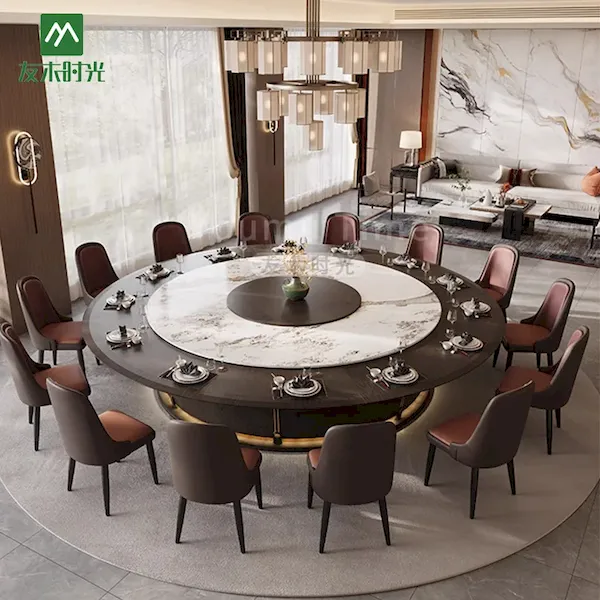
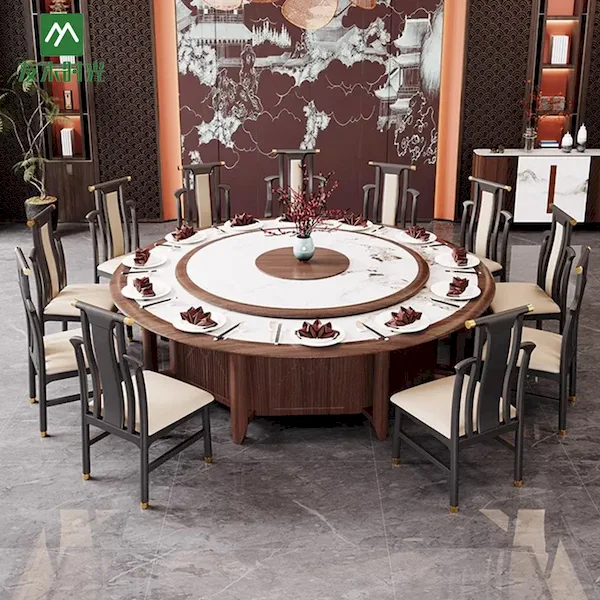
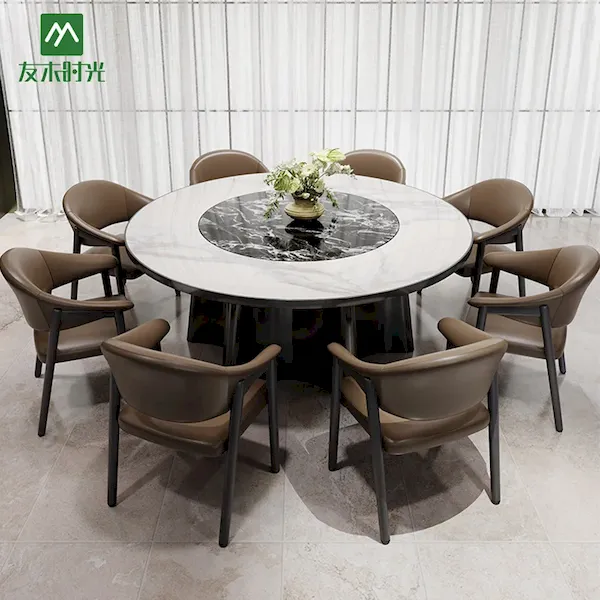
webp.webp)

